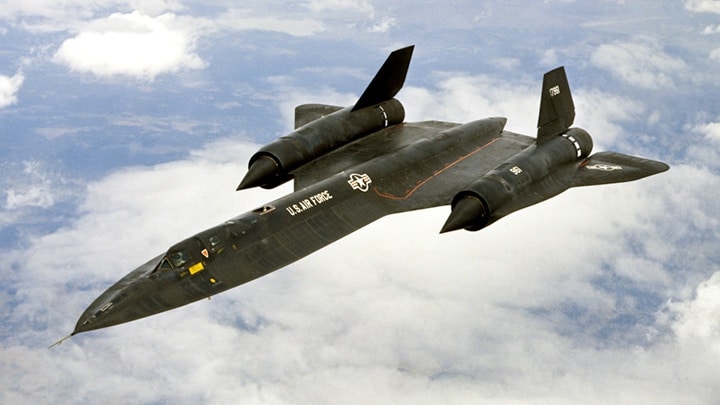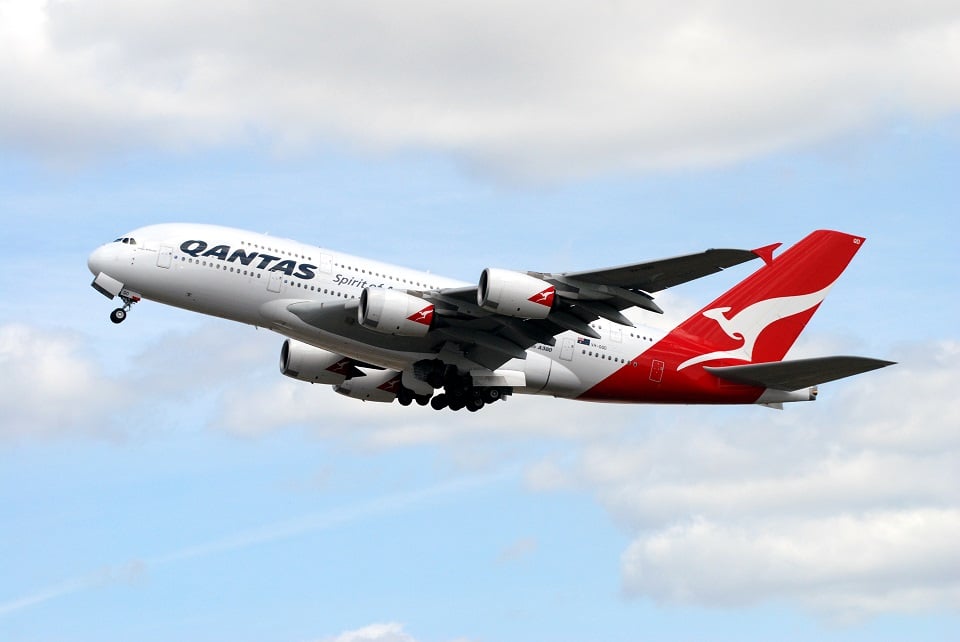Aviation
10 Things You Don’t Know About ‘Black bird’ ..!

- The SR-71 has been given several nicknames, including Blackbird and Habu. The SR-71 served with the U.S. Air Force from 1964 to 1998.
2. SR-71s first arrived at the 9th SRW’s Operating Location (OL-8) at Kadena Air Base, Okinawa on 8 March 1968. These deployments were code-named “Glowing Heat”, while the program as a whole was code-named “Senior Crown”. Reconnaissance missions over North Vietnam were code-named “Giant Scale”

3. A total of 32 aircraft were built; 12 were lost in accidents and none were lost to enemy action. Considering all accidents, Only one crew member, Jim Zwayer, a Lockheed flight-test reconnaissance and navigation systems specialist, was killed in a flight accident. The rest of the crew members ejected safely or evacuated their aircraft on the ground.


4. Finished aircraft were painted a dark blue, almost black, to increase the emission of internal heat and to act as camouflage against the night sky. The dark color led to the aircraft’s nickname “Blackbird”. The outer windscreen of the cockpit was made of quartz and was fused ultrasonically to the titanium frame. The temperature of the exterior of the windscreen reached 600 °F (316 °C) during a mission.

5. It has held the world record for the fastest air-breathing manned aircraft since 1976; this record was previously held by the related Lockheed YF-12. During aerial reconnaissance missions, the SR-71 operated at high speeds and altitudes to allow it to outrace threats. If a surface-to-air missile launch was detected, the standard evasive action was simply to accelerate and outfly the missile.

6. The red stripes on some SR-71s were to prevent maintenance workers from damaging the skin. Near the center of the fuselage, the curved skin was thin and delicate, with no support from the structural ribs, which were spaced several feet apart.

7. The Blackbird’s tires, manufactured by B.F. Goodrich, contained aluminum and were filled with nitrogen.

8. The air inlets allowed the SR-71 to cruise at over Mach 3.2 while keeping airflow into the engines at the initial subsonic speeds. Mach 3.2 was the design point for the aircraft, its most efficient speed. At the front of each inlet, a pointed, movable cone called a “spike” (Inlet cone) was locked in its full forward position on the ground and during subsonic flight.

9. The SR-71 was powered by two Pratt & Whitney J58 (company designation JT11D-20) axial-flow turbo-jet engines. The J58 was a considerable innovation of the era, capable of producing a static thrust of 32,500 lbf (145 kN)

10. Life support SR-71 pilot in full flight suit Flying at 80,000 ft (24,000 m) meant that crews could not use standard masks, which could not provide enough oxygen above 43,000 ft (13,000 m).an emergency ejection at Mach 3.2 would subject crews to temperatures of about 450 °F (230 °C) thus, during a high altitude ejection scenario, an onboard oxygen supply would keep the suit pressurized during the descent

General characteristics
- Crew: 2: Pilot and Reconnaissance Systems Officer (RSO)
- Payload: 3,500 lb (1,600 kg) of sensors
- Length: 107 ft 5 in (32.74 m)
- Wingspan: 55 ft 7 in (16.94 m)
- Height: 18 ft 6 in (5.64 m)
- Wing area: 1,800 ft2 (170 m2)
- Empty weight: 67,500 lb (30,600 kg)
- Loaded weight: 152,000 lb (69,000 kg)
- Max. takeoff weight: 172,000 lb (78,000 kg)
- Powerplant: 2 × Pratt & Whitney J58-1 continuous-bleed afterburning turbojets, 34,000 lbf (151 kN) each

Performance
- Maximum speed: Mach 3.3[121][122][N 5] (2,200+ mph, 3,540+ km/h, 1,910+ knots) at 80,000 ft (24,000 m)
- Range: 2,900 nmi (5,400 km)
- Ferry range: 3,200 nmi (5,925 km)
- Service ceiling: 85,000 ft (25,900 m)
- Rate of climb: 11820 ft/m (60 m/s)
- Wing loading: 84 lb/ft² (410 kg/m²)
- Thrust/weight: 0.44
Liked it..?
Share with your friends and family

Aviation
Lost Tool Found in Qantas A380 After 34 Flights

An Australian Transportation Safety Bureau (ATSB) investigation recently revealed that a Qantas A380 operated 34 flights with a 1.25-meter nylon tool lodged in one of its engines.
This turning tool, used during borescope inspections to rotate the intermediate-pressure compressor, was left behind during scheduled maintenance at Los Angeles on December 6, 2023. It remained inside the engine until it was discovered by maintenance staff during a subsequent check at Los Angeles on January 1, 2024.
China Takes the Lead in Sixth-Generation Fighters with White Emperor B
The ATSB report highlights two critical lapses. First, maintenance engineers failed to notice the tool during final checks for foreign objects after the borescope inspection. Second, the lost tool procedure was not activated when the tool was identified as missing.
The certifying engineer ultimately cleared the aircraft for service without accounting for the misplaced tool. During the time qantas films the tool was inside, the A380 completed 34 flight cycles, accumulating nearly 294 hours without any noticeable effect on engine performance.
Although the tool was deformed by high-energy airflow within the engine, there was no reported damage to the engine itself. ATSB Chief Commissioner Angus Mitchell commented.
India’s C-295 to Gain Advanced Weapons for Maritime Surveillance
“This incident underscores the importance of following established maintenance protocols. Engineers missed the tool during foreign object checks, and the required lost tool procedure wasn’t started after realizing the tool was missing.”
Following the investigation, the airline issued a safety directive, urging all engineering and tool storage teams to adhere strictly to these protocols to prevent similar incidents in the future.
A qantas spokesperson stated, “While the tool didn’t impact engine performance, we take this incident very seriously. It is critical to follow the correct lost tool procedures.”
-

 Aviation2 months ago
Aviation2 months agoBoeing confirms 797: A New Era for Mid-Size Aircraft
-

 Aviation2 months ago
Aviation2 months agoMicrosoft Flight Simulator Raises $3 Million to Bring Back the An-225 Mriya
-

 Aviation2 months ago
Aviation2 months agoLockheed and Tata Team Up to Build C-130J MRO Facility in India
-

 Airlines2 months ago
Airlines2 months agoQantas Engineers Stage Walkout Over Cost of Living Concerns
-

 Airlines2 months ago
Airlines2 months agoQatar Citizens Can Travel to the United States Without a Visa
-

 Aviation2 months ago
Aviation2 months agoBoeing Offers 25% Pay Increase & Promise to Build Next Plane in Seattle
-

 Aviation2 months ago
Aviation2 months agoQatar Airways bans these new Electronic Devices on plane
-

 Airlines2 months ago
Airlines2 months agoEmirates Ends 28-Year Singapore-Melbourne Fifth Freedom Route










